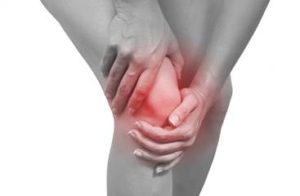 Whether you’re focused on running, playing sports, lifting weights or any sort of strenuous activity, the knee is often one of the most problematic areas of the body. Even if you simply enjoy walking, the knee takes on its fair share of impact and, not surprisingly, knee pain is a common complaint among people of all ages.
Whether you’re focused on running, playing sports, lifting weights or any sort of strenuous activity, the knee is often one of the most problematic areas of the body. Even if you simply enjoy walking, the knee takes on its fair share of impact and, not surprisingly, knee pain is a common complaint among people of all ages.
For most people, knee pain seems to creep up over time, often associated with some sort of repetitive movement or a quick increase in activity after a period of inactivity. In either scenario, the wellbeing of your knees and the muscles around them should be an integral part of your fitness routine. This becomes all that much more important as we get older.
Anatomy of the knee
The knee joint is essentially two pillars stacked on top of one another with the femur being above the tibia. Despite what seems like a poor design, the knee joint is actually quite stable due to all the muscular and ligament attachments. In all, there are 12 muscles which control the knee and 5 ligaments which directly stabilize the knee.

According to Gray Cook, a physical therapist who has developed the functional movement screening approach, injuries relate closely to proper joint function (or dysfunction) in that problems at one joint usually show up as pain in the joint above or below.
In our case of knee pain, the first thing to understand is that the knee is a stable joint which functions and exists directly between two very mobile joints—the ankle and the hip. If the ankle and hip lose their mobility, the lost motion is gained by sacrificing stability at the knee. In other words, if your ankle or hip become stiff, your knee will start moving in a different plane of motion (more mobile) and prone to injury and/or pain.
Next week we will discuss proper exercises, stretches, and more to help alleviate knee pain. Stay tuned!
